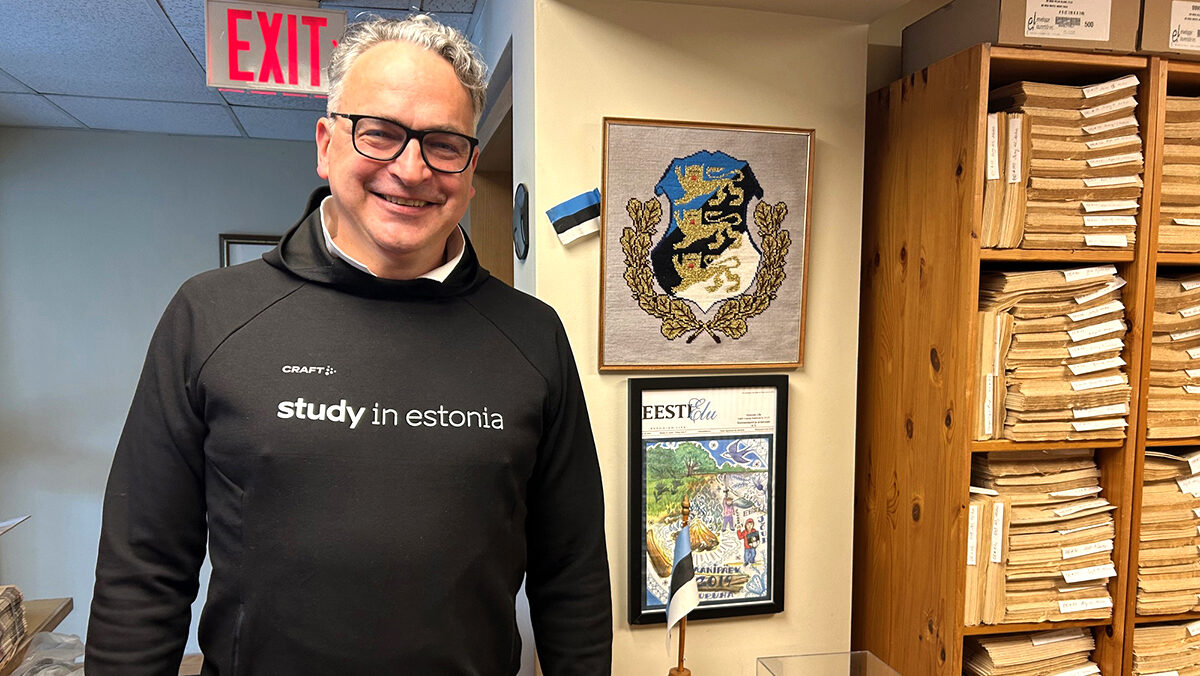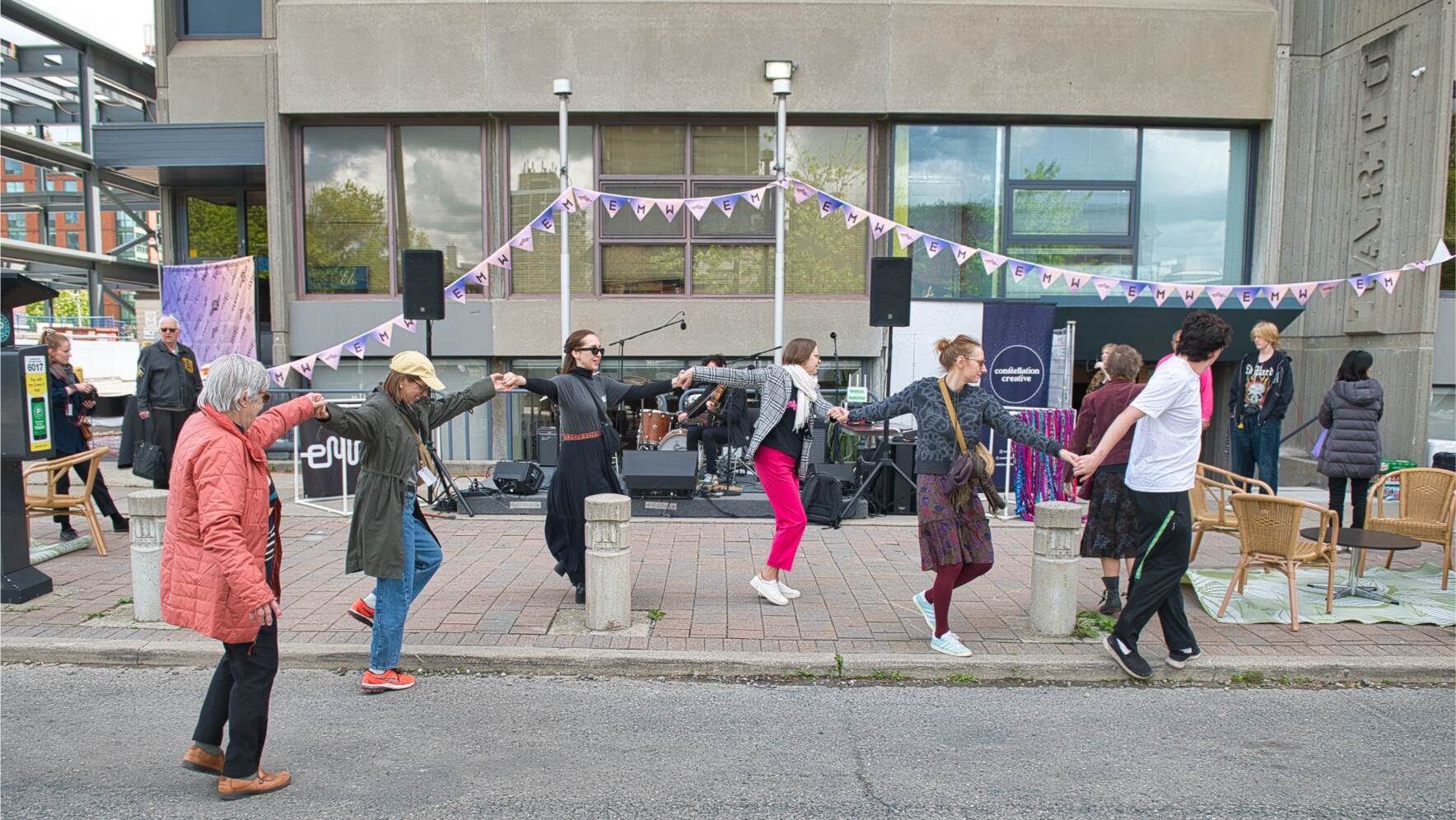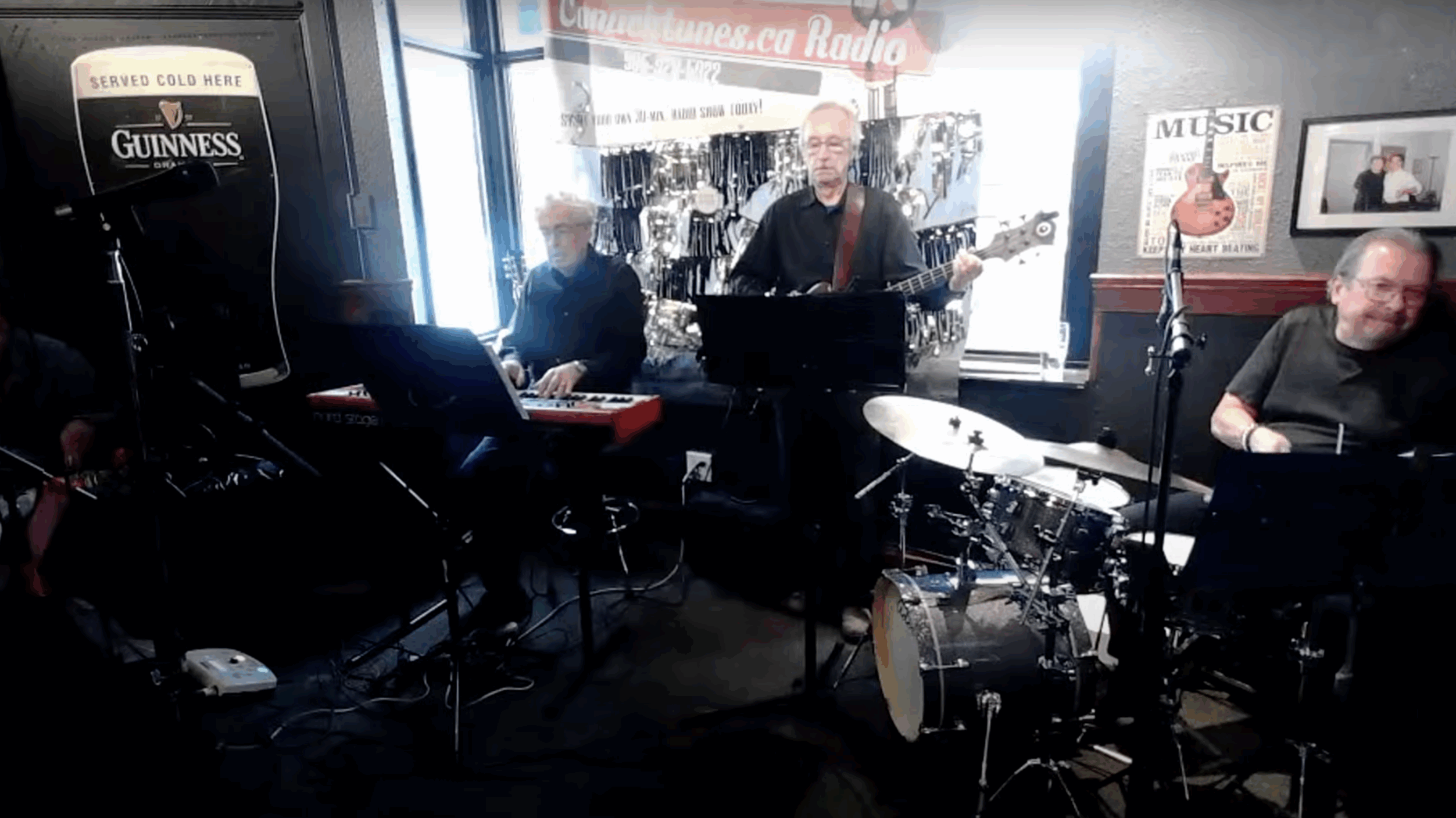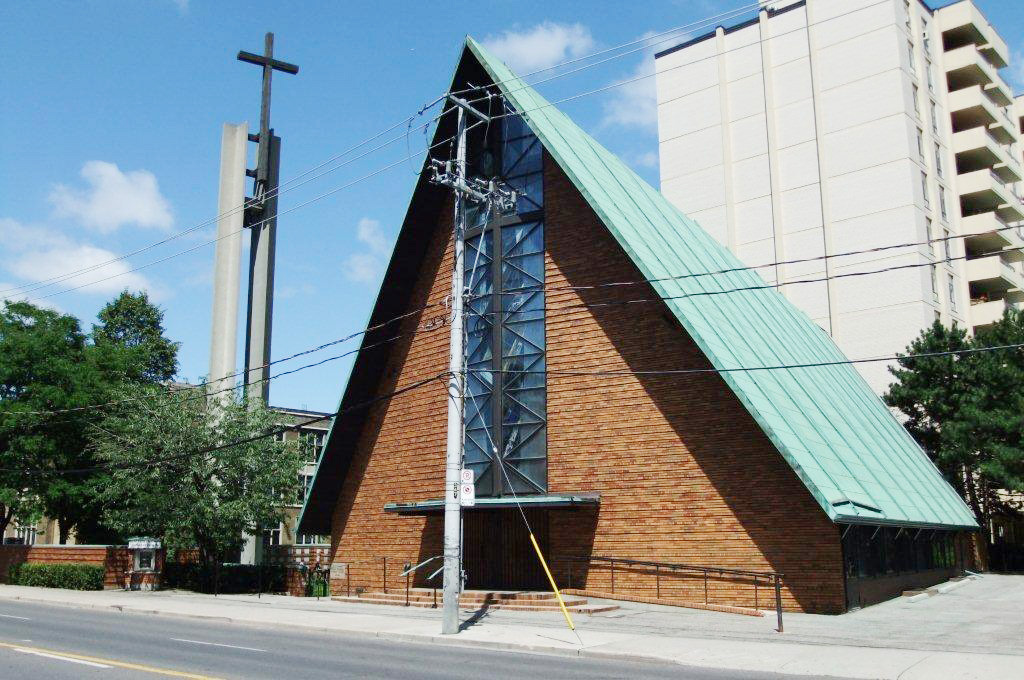Taking Stock
Compared to other North American Estonian communities, we in Toronto can pat ourselves on the back for having a large and successful third-generation presence. In fact, I truly believe we have the most active and involved third generation out there. At the same time, I also believe we could surely be doing much better to keep our younger generations engaged.
While it gives me no pleasure to admit it, Eesti Maja is increasingly unattractive to our youth. I personally still go to Eesti Maja several times a week, but I realize that I am very much in the minority among people aged 18-35. In fact, in writing this article I tried a little exercise: I wrote down the names of everyone I could remember from my Eesti kooli klass. I then tried to remember the last time I ran into any of them at Eesti Maja. The result was this: I honestly could not and cannot remember the last time I saw any of them there in at least the last five years, and probably closer to ten. I wish this was an exaggeration. Of the names I have written down, probably around half of them I have barely seen at any Eesti events, although I don't assume that they are necessarily “lost” to our community just for that reason. The other half is people I still run into elsewhere – at Tartu College, Roti Maja, Suvihari, Kotkajärve, EstDocs, and so on. But not at Eesti Maja. I suspect this is not all that different from other Eesti kooli lennud as well.
Partly this is because Eesti Maja is an old building and shows its age. However, another part of it is simply that the things that have attracted eestlased to Eesi Maja in the past are not quite the same things that would attract younger estos today.
Nostalgia is the biggest selling point for Eesti Maja, and it is not selling well. Being cloistered with your own people is not selling well. Patriotism, on its own, is not compelling enough. Young people might still go there for the right events, but these events have been few and far between. This is partly because Eesti Maja does not pay a program manager, partly because estos rarely rent Eesti Maja for their personal functions (i.e. when it's their own money rather than Sihtkapital's on the table), partly because places like Tartu College have done a commendable job of organizing their own events, and partly because our community simply has much more space across multiple buildings than we know what to do with. As I mentioned in my Estonian-language article, by my calculations Estonian renters and user groups use Eesti Maja something like 10% of its rentable time, meaning that 90% of the time the building's rentable space is not used by the community. Furthermore, if tenants are also included, the vast majority (well over 90%) of esto-related usage is paid for by a combination of tenants (especially the bank), Sihtkapital, and Eesti Maja (via effective subsidies for estos).
In my view, the biggest challenge for our community's sustainability is disengagement. Young Estonian-Canadians do not need eestlus. It's not exactly hard for third-generation Canadians to seamlessly assimilate as regular, plaid-shirt wearing hyphenless Canadians. True –some of us may have a double vowel in our name or some similar quirk that causes us to stand out a bit. But the political imperative is gone. Eesti is now free. Eestlus is doing just fine across the ocean.
If we stay active in eestlus, it is because we choose to do so, because it means something to us. Fortunately, Canadian culture encourages diversity, uniqueness and cultural richness. There's really no good reason why we can't be fully Estonian, and also fully Canadian, at the same time. The fact that we might speak some eesti keel, have an ETCU bank card, own rahvariided, make it a point to hit up Laulupidu in Eesti, and take part in community events doesn't mark us as any less Canadian – in fact, in Toronto it is par for the course. If anything, it's a special kind of personal uniqueness. One of my best friends, who is third-generation Jewish, happens to speak Hebrew and lived on a kibbutz in Israel for a year. So I and my hyper-Estonian identity don't exactly stick out like a sore thumb in a city like Toronto.
Is our community preordained simply to die out? From my perspective, if we third-generation Canadians still care about eestlus, I don't see any inherent reason why a fourth generation can't be the same way. I still remember people's predictions in 2000 that that year's Kotkajärve suurlaager would be the last one of its magnitude. Yet 2008 was just as big. Then people said the same thing about the next one, and 2015 was nothing to sneeze at either. Looking at the number of kids in Lasteaed and hellakesed/hundud, I am hardly left with the impression of a community on the brink.
Keys for sustainability
What surely is true is that the character of our community is changing. We have fewer and fewer “full time estos,” people who would circle every community event in their calendar and faithfully show up early to boot. For most younger people, Estonian events and organizations compete with non-Estonian ones on a level playing field. The “estoness” of an event is not, on its own, sufficient.
If we are going to have a sustainable community, it will be because we are clever about how we use our community spaces, events, and organizations. Eesti kool, lasteaed, and skaudid/gaidid will always be critical for raising our youngest members to be uhked eestlased. However, past leeri age, we can't assume anyone will remain active and involved just because. There are three principles I would suggest are particularly important. The first is to think about events and spaces on the basis of whether they excite people on their own merits – where the “estoness” is what puts it over the top rather than being the main or only selling point. The second is focusing on proper scale. The third is crossover appeal – thinking beyond just our small community.
A few examples will hopefully keep these from being pure abstractions. Not too long ago, Korp! Filiae Patriae organized an improv workshop at Tartu College, which was led by an improv group from Eesti (seemingly the only Estonians who make a career in this field, as it turns out). The attendance was around 20, predominantly in the age range 18-30, and included a number of people I don't see every day at other community events. Although not the kind of thing that would attract everyone in the community, the event was properly scaled, freshly conceived, well executed, and fun. Although I am not a member, I think the skaut-gaid orkester “Kõla” is a successful example of taking something that people would be interested in anyway and channeling it through an Eesti lens. As an example of crossover appeal, a few years ago there were Jane's Walks held in the Annex area to introduce Estonian architecture, of which there are quite a few notable examples in that neighbourhood. This kind of event drew a mix of eestlased and architecture aficionados who have nothing to do with eestlus. A similar principle is true of EstDocs. In a somewhat different vein, Metsaülikool has achieved a crossover appeal with kodueestlased, many of whom rave about Kotkajärve back in Estonia and are increasingly excited to return, even paying their own way. If we look at these and other successful organizations and events in the community, I would wager that most of them tick at least one, and likely several, of the three boxes I named above.
One of the challenges that we continue to face is that it often takes energetic visionaries to organize and plan great events. Consider Allan Liik, who built a wonderful jazz festival, JK Jazz, out of his own vision and determination. I also thought Maimu did a great job with Sihtkapital, and does a fantastic job with Metsaülikool. I really appreciate the great work of Piret and her team at Tartu College. There are other examples too. The challenge is that these types of community builders are hardly a dime a dozen.
By now, many people have familiarized themselves with the proposal to build a consolidated community hub on Madison Avenue in downtown Toronto. For those who haven't I encourage you to check out this link. The proposal comes from four organizations that play important roles in our community: the credit union, Sihtkapital (National Foundation), Tartu College, and Eesti Maja. There are a lot unknowns and a lot of things to be worked out. There are risks. There are tradeoffs. For one thing, it would require selling the existing Eesti Maja property on Broadview Avenue. Soon Eesti Maja shareholders will be voting on whether the potential project is deserving of more detailed analysis (indicating a willingness to move Eesti Maja to a new home), or whether the proposal is unacceptable and should be rejected outright. There has been a great deal of lively debate in the community, with people I respect taking both sides.
There has been plenty of comment recently relating to the due diligence period, and the things that will need to be carefully considered in that phase, assuming the project gets there. This is welcome. I would like to touch on one thing that I think has gone under the radar – namely, the potential for a great community space to rejuvenate our community, in particular for our younger generations. Having a great space could inspire our community to stay more active. But it could also help to offset some of the difficulties of finding visionaries to organize great events. You don't always need to organize formal events if you've got a place people really want to be.
Let's return to the three points I mentioned above. Can we build a community space that is a destination in its own right? The kind of place that people would not just attend for organized events, but also drop by just to see what's going on (especially if there is a cafe, bar or restaurant)? The kind of place where the inherent attractiveness of the place is plenty to get people in the door the first time, and the Estonian part is what keeps them coming back? What about scale? Can we be clever and resourceful with our space usage? Can we make the space flexible and versatile to meet our needs? Can we take advantage of synergies with Tartu College? And finally: could a new community centre have much-needed crossover appeal? Would it appeal also to non-Estonians? More specifically:
Is this the kind of place I would meet up with other estos, even if there was no organized event?
Is this the kind of place I would take non-esto friends?
Is this the kind of place I would show to colleagues?
Is this the kind of place I would proudly tell people about?
Is this the kind of place I would hold my own special events?
Is this the kind of place I would drop by, if I happened to be in the neighbourhood?
Our Estonian community spaces are there first and foremost to serve us, eestlased. But we cannot be so shortsighted and haughty to think that is enough. For one thing, given our community's size, we need the revenues that come from non-Estonian users and renters. For another, I think there is an underappreciated virtuous cycle in play, if we extend our horizons beyond our own community.
Consider IKEA versus old-school furniture stores. The latter are invariably large, empty buildings that people would never visit unless they are actually shopping for furniture, which at any given time is a small percentage of the population. Yet, ironically, because these places are so back-of-mind all of the time, most people don't think or want to go there even when they do happen to be in the market for furniture. IKEA, in contrast, is a beehive of energy, filled to the rafters with families and people of all ages, many of them there just for the Swedish meatballs. What IKEA realizes is that a lively and dynamic atmosphere is not just good for the meatball crowd – it actually attracts their core target customers too. Heck, the quality of the product does not even need to be great, the liveliness of the building gets customers through the doors.
My point here is nothing more than to say that if we want to build a community hub that attracts our youngest generation of eestlased, we need to think beyond our target group. Let's suppose there are three groups of people – active Estonians, Estonians on the periphery, and non-Estonians.
In order to keep active Estonians involved, the best thing we can do is to keep people on the periphery at least somewhat engaged. These people may not come out to every event, but even coming out to a few – the particular ones that interest them the most – has the effect of broadening our community's base, which is good for everyone. If dropping by even a couple times a year keeps people feeling as though they are part of the community, I think that's great.
Similarly, if we want to keep those on the periphery engaged, the best thing we can do is to engage non-Estonians as well. The people on the periphery may not spend most of their time hanging out with other estos, but that doesn't mean they are not proud of their Estonian heritage. The more pride we have showing off our community to others, the better our prospects for retaining our own people.
I believe these principles remain true whether we consolidate at Madison, try to make a go of keeping Eesti Maja, move Eesti Maja out to the suburbs, or any other hypothetical outcome. I would encourage proponents of alternate visions to consider how their preferred solutions, too, could fulfill these goals. However, I don't believe all these theoretical options come equal in whether or how well they could rejuvenate our community. Say what you will about highway versus subway access, but the Annex is one of the most lively and dynamic neighbourhoods in the GTHA. Meanwhile, Eesti Maja faces serious headwinds, as I described in my Estonian-language article (and as others have detailed as well), and any kind of effort to build a similar or superior space there as is proposed for Madison would likely cost a similar order of magnitude – except without an obvious funding base.
Eesti Maja through time
Is an Eesti Maja at 958 Broadview Avenue so sacrosanct that all other options are simply unacceptable? Should we push off all talk of consolidated community hubs until we are left with no other choice? Is there a reason why Estonian House in Toronto Limited's founding documents, dating to 1951, have no mention of Broadview Avenue?
Consider this thesis: that the outcome we are all familiar with – an Estonian House on Broadview Avenue – was the unlikely result of a series of chance events. Readers may be interested to contemplate some potential alternative histories for the Estonian community in Toronto, drawn from Karl Eerme's accounts in the special-edition journal “Eesti Maja Torontos,” published in 1963.
I mentioned the founding of Estonian House Limited in 1951. For eight years, it owned no real estate, though not for lack of trying. In 1953, a bid was submitted to buy a City surplus property on Davenport Road near Dufferin; that bid was rejected and the property was instead sold to the Slovak community, becoming a church. A second near-purchase, later that same year, was a house on St. George north of Bloor, which was instead redeveloped to become an apartment building (incidentally one of, if not the first, 10-ish storey apartment buildings along this stretch of St. George). In 1955, shareholders voted in favour of purchasing a 1920s synagogue on Shaw Street, but negotiations proved unsuccessful. As the Jewish community moved north, the synagogue was sold in 1959 and became a cathedral, which it remains today. The board then made an unsuccessful offer on a College Street property and continued for several years to debate the merits of the parcel as it sat unsold. The property ended up being redeveloped in the late 1960s as commercial storefronts.
Then, in 1959, Estonian House Limited became the proud owner … of a property on Merton Street in Midtown. This “first” Estonian House did not last very long, once it was discovered that the neighbourhood was officially “dry.” Finally, with the Merton property not yet sold, a bid of $101,000 was submitted for the Old Chester School on Broadview, which had come on the market. The offer was accepted, narrowly beating out the next highest bid of $100,200. The Merton property ended up being sold at a loss to the Girl Guides of Canada, who redeveloped the site for their headquarters.
The Estonian House on 958 Broadview has served our community very well – of that there can be no doubt. Its good location and plentiful space have been valuable. More importantly, there is a lot of sweat equity in the building. Additions to the back and front of the old schoolhouse have allowed our community to leave our own imprint, and many volunteer hours have been put into keeping the place going. To leave this important fact unacknowledged would be wrong.
A new community centre, a new Eesti Maja, can and should pay homage to our great history on Broadview.
But let's remember this. The founding story of our Eesti Maja is one of fits and starts. It is a story of cleverly capitalizing on a good opportunity when it came up. It is also a story of perseverance – against voices who said even then that the status quo is just fine, that a house can't rejuvenate a community. There is a cornerstone beside the entrance of Eesti Maja that quotes Henrik Visnapuu: “Meie kestame üle aja.” The “meie” is not bricks and mortar. It is you and me – it is our community. With any luck, we can aspire to last another fifty years at least.
Veiko Parming, Toronto



